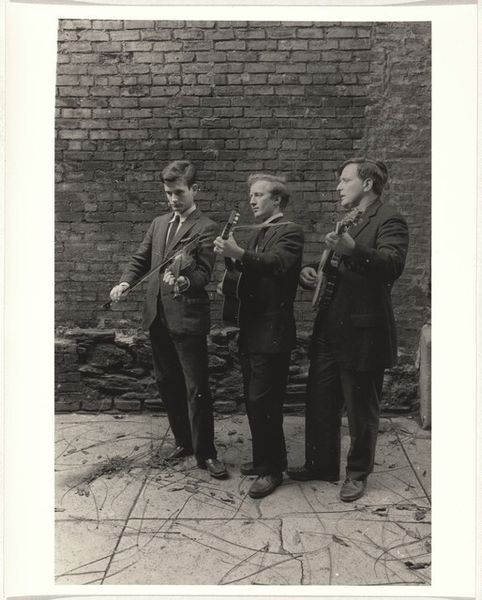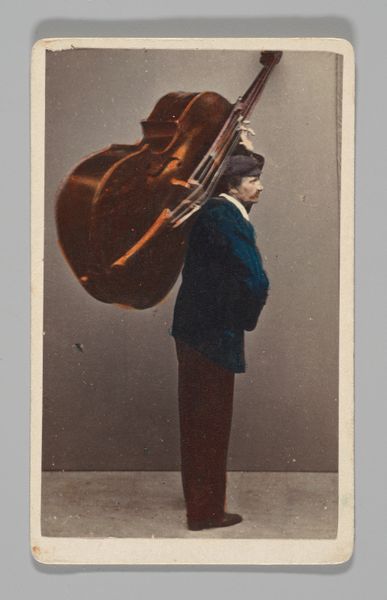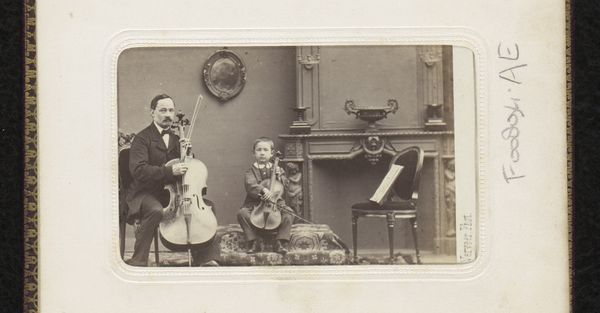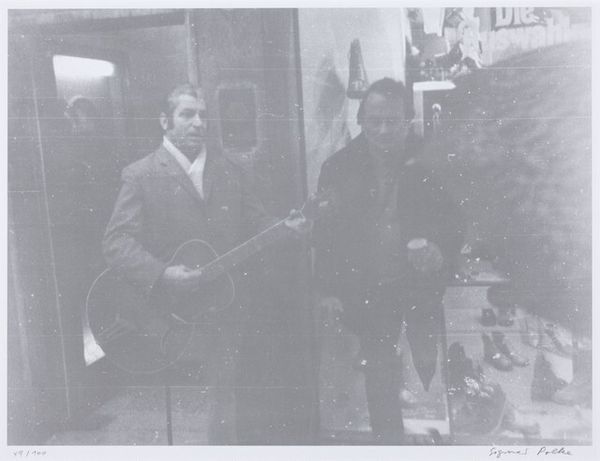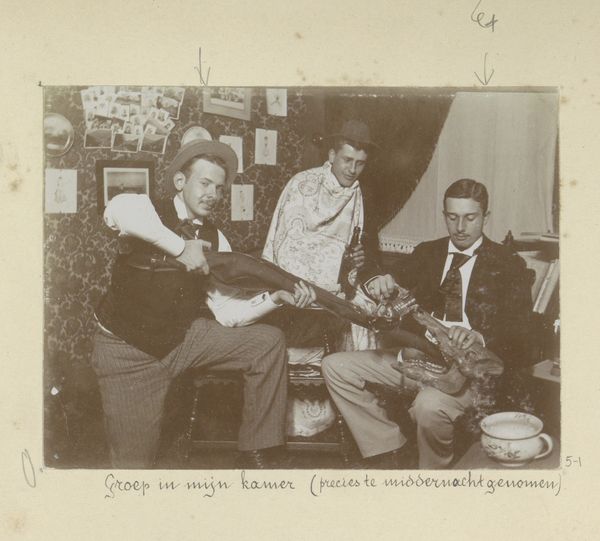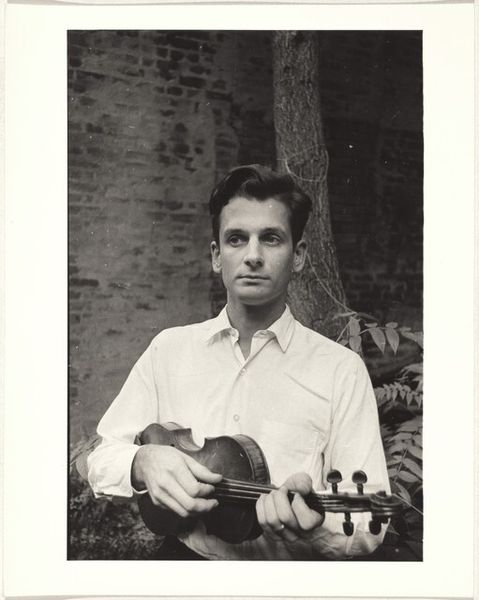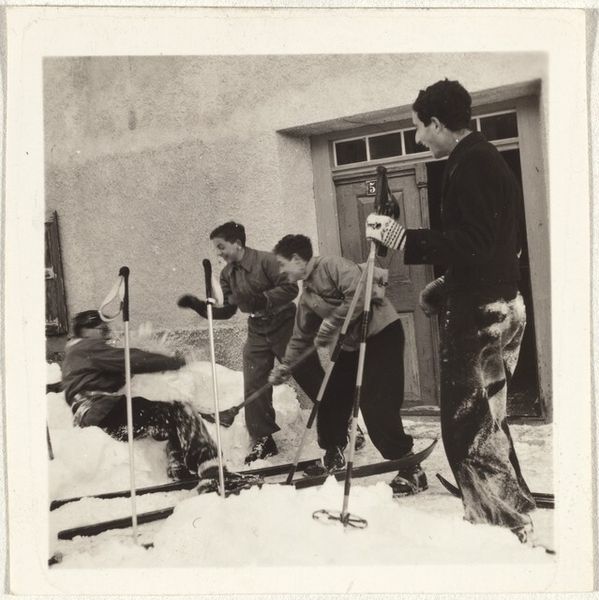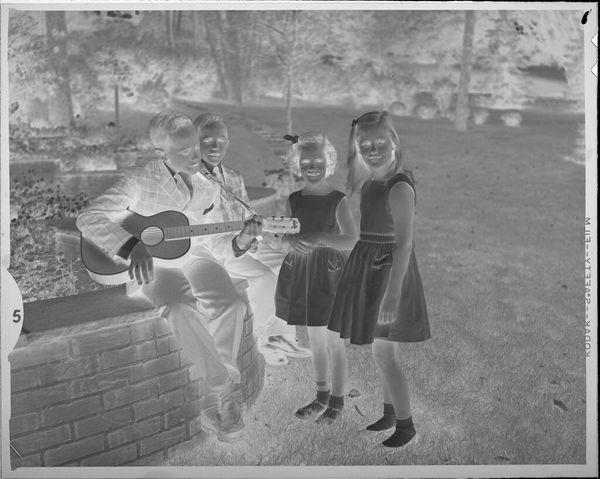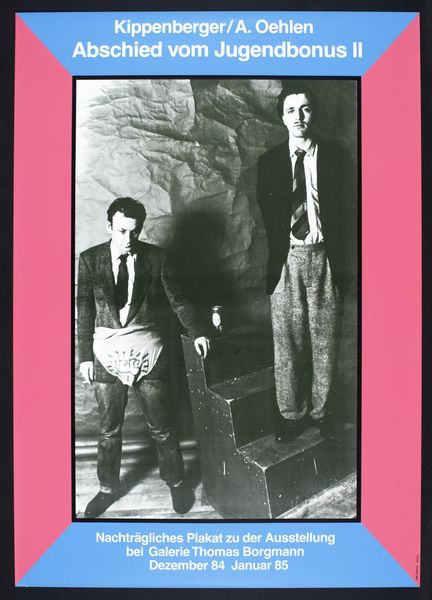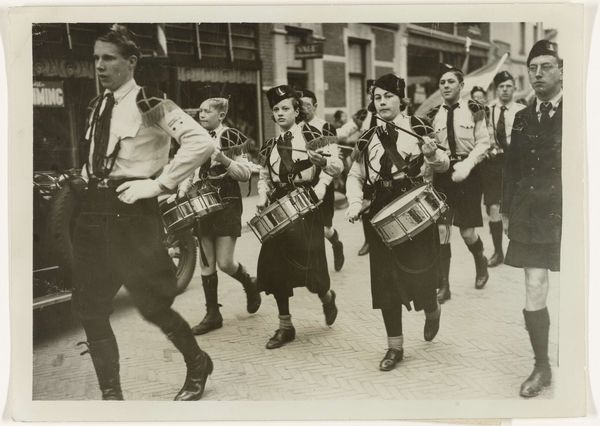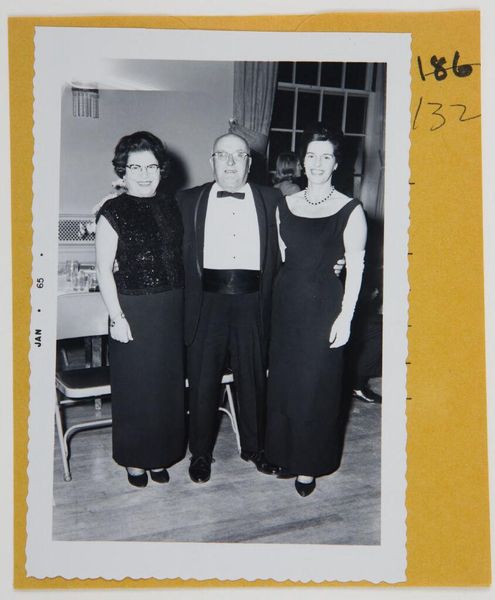
Dimensions: image: 24.2 x 16.7 cm (9 1/2 x 6 9/16 in.) sheet: 25.3 x 20.1 cm (9 15/16 x 7 15/16 in.)
Copyright: National Gallery of Art: CC0 1.0
Curator: Sobering. It’s got this gravity about it, a deep stillness. This Robert Frank image from 1958 or '59, titled "New Lost City Ramblers," hits you, doesn’t it? Editor: Indeed. Before even knowing the title or Frank's intention, one is drawn to the worn surfaces evident within the gelatin-silver print itself; brick and cracked pavement providing a hardscrabble backdrop to the ensemble. The print shows signs of handling; I can almost smell the fixer. Curator: See, for me, the materials take a back seat initially. I notice their somber expressions first. They look almost defiant against the grimy brick wall. I feel the weight of their music, or the world, perhaps both. It makes me consider what a gelatin silver print holds - like the very moment being held and displayed in different forms. Editor: Well, that grimy wall, to me, is as important as the banjo in the foreground. It is through such detailed depictions that Frank reveals so much. Gelatin-silver printing, perfected around 1880, enables fine details like those in the decaying wall texture here. It’s all about what the tools of production make available. It’s the context the musician finds themself in, to some extent… literally and figuratively. Curator: Right, you're drawn to that grounding – it’s an indexical representation, showing an inherent history that reveals the subject matter with a very distinct kind of materiality. I’m caught by how Frank captures what feels like their essence, their story, with such… economy. You can see this with the gelatin prints Frank produced from his influential book, *The Americans*. What you get out of it may be painful and revelatory; that’s what pulls me in. Editor: Absolutely. And Frank isn’t merely documenting some romantic, gritty reality; he is showing these musicians existing within a complex matrix of material conditions that make them visible to us at all. By embracing techniques affordable and accessible at the time, Frank created something so profoundly real and of the people. Curator: True, the very fabric of how their music could exist, and their image be displayed today, connects with Frank’s decision to just… show it as is. This image captures a mood, a feeling – I get almost a quiet resilience from these ramblers against that worn wall. It sits deep in the heart. Editor: It makes you appreciate not just the art, but the art of making it – how social, political and material circumstances feed back into its interpretation.
Comments
No comments
Be the first to comment and join the conversation on the ultimate creative platform.
